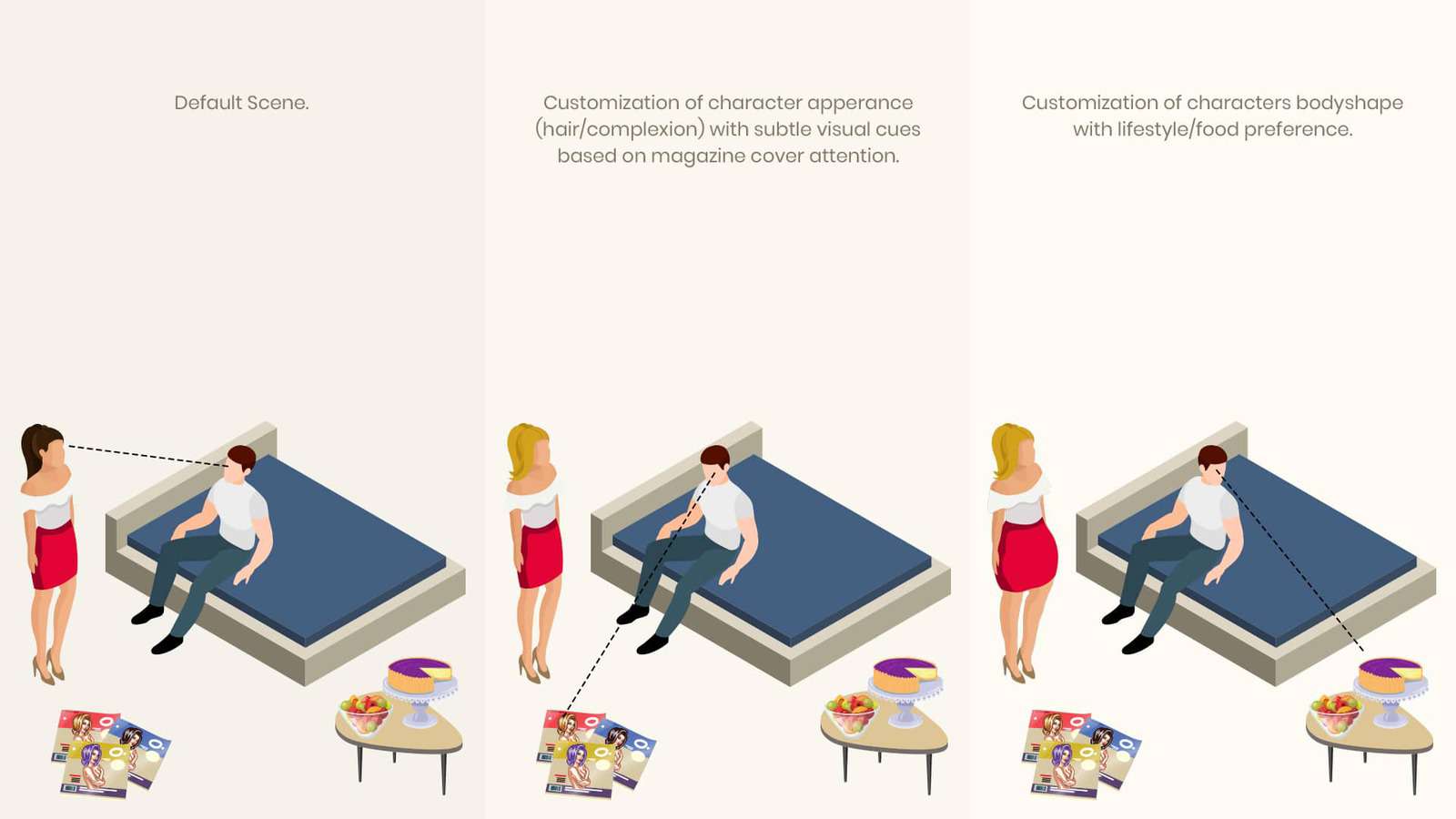Virtuleap is not an adult company. Nonetheless, it is a company developing technology that could lead to more immersive and interactive adult VR experiences if developers get behind the concept of its Gaze-At-Ratio (GAR). Amir Bozorgzadeh, cofounder and CEO of Virtuleap, explained to SEXTECHGUIDE that he wants it to be “the Google PageRank” of VR and Augmented Reality experiences.
In a nutshell, the GAR is the result of the computation of a bunch of variables within a VR environment – like distance, depth and the viewing angle of the user – in relation to specific objects, with the ultimate aim of generating a score that shows how much attention users pay to each object. The duration of attention played also plays a large part in the overall GAR score. In laymans terms it’s pretty straightforward: the GAR is a way of measuring how interested a viewer is in a particular object within a VR environment.
As is common among co/founder CEOs, Bozorgzadeh has high hopes for his company, which has already graduated from the Boost VC accelerator. For example, rather than thinking of Virtuleap as ‘the Google Analytics of VR and AR’, the aim is to become an industry-standard measurement tool for attention in digital 3D environments, hence the comparison with PageRank instead. And it’s with this push that he hopes to get developers – indies and enterprise – on board, because up to now, VR/AR devs have largely been left to figure things out for themselves, and develop their own bespoke tools and measurements.
Anyone that’s ever had to perform A/B testing or knows anything about product placement will see the immediate use cases for this technology, and while those are both valid, it’s the potential to use the GAR score as a content trigger that should be most exciting to adult creators; enabling users to jump into a fantasy of their choosing is the adult experience.
For the adult world this means if a VR porn producer or game developer integrated Virtuleap’s GAR algorithm, they could then create a truly immersive digital experience that bends to the whims of the viewer. Rather see a dominatrix in that scene than a nurse? No problem!

An attention metric stopgap?
The main way businesses can currently track user attention in 3D digital environments is through resource-intensive heat maps – a technology that can hamper the end-user experience, and fails to provide enough information to truly derive user attention (and intention) in a granular way.
“There has been very little innovation in terms of attention tracking, which you would think is the most fundamental thing to create, establish, and introduce properly as a fundamental tool for 3D worlds,” Bozorgzadeh told us. “I think a lot of companies are waiting for eye tracking tech to come into play, but they’re at least a couple years away from being integrated into mainstream headsets, particularly because the trend at the moment is to make hardware leaner in terms of CPU/GPU costs. The market is all about driving tetherless headsets that don’t kill mobile batteries in 10 minutes. Eye tracking tech has a heavy production cost, which is what’s delaying it from being introduced to the mainstream.”

While that might seem to position Virtuleap as a stopgap somewhere between heatmaps and full eye-tracking technology going mainstream, that’s not the case. As the overall algorithm is based on multiple factors, eye positioning isn’t the only important part of the puzzle. Regardless, when eye tracking tech hits the mainstream, Virtuleap will simply incorporate it into the algorithm to make it even more accurate, Bozorgzadeh explained.
By basing it on factors like how close the object is to their direct gaze (line of sight), what the viewing angle is, proximity, and even if they interact with the object, rather than just how long an object is in the field of view, developers get full control of the scene narration – it can be triggered by the overall GAR score in total, or be broken down into layers of interactions according to the individual variables that together make up the GAR score. It all depends how deep the developer wants to integrate the GAR into the experience, which Bozorgzadeh insists only requires a couple of lines of code.
From the user perspective, Virtuleap’s GAR algorithm used as a content trigger provides countless exciting possibilities – both in the adult realm and beyond. Its success, however, doesn’t lie in user excitement, but how successful Bozorgzadeh is at attaining that wider goal of getting widespread dev support and becoming an industry-standard measurement.








